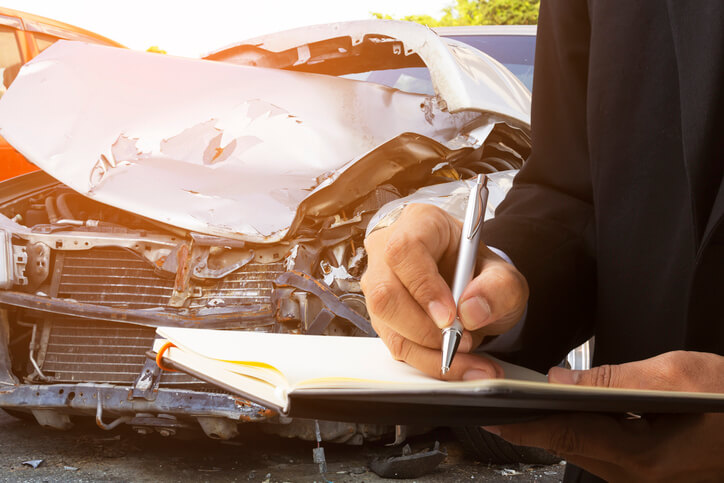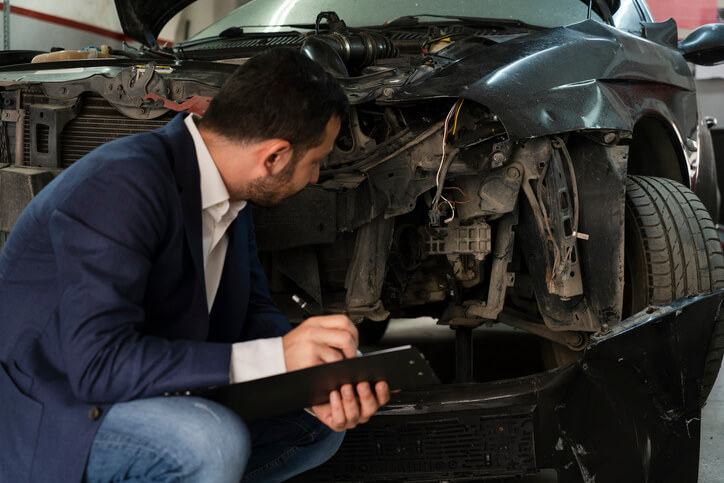Understanding Salvage Value for Students in Auto Body Estimating Training
Understanding salvage value is a critical skill that can significantly impact the accuracy of repair estimates and the overall decision-making process. Learning how to calculate and assess salvage value is essential for students interested or currently in auto body estimating training.
This blog explores salvage value, its importance in auto body repair, and how future estimators can master this concept during training.
What Is Salvage Value?
Salvage value is the estimated remaining worth of a vehicle at the end of its “useful” lifespan. In such cases, the vehicle is typically sold for its salvage value, which is the amount a scrapyard or a salvage company is willing to pay for its usable parts and materials.
As you’ll discover in auto body estimating training, salvage value is important because it determines the final payout in a total loss claim. It represents the amount the insurance company can recover by selling the vehicle, which reduces the total amount they need to pay the policyholder. This value plays a crucial role in how much compensation the vehicle owner receives.

Importance of Salvage Value in Auto Body Estimating
For auto body estimators, understanding salvage value is essential for a few reasons:
- Accurate Estimating: Salvage value helps estimators provide accurate estimates for repairs and total loss claims. Knowing the potential salvage value can help estimators provide more comprehensive information to insurance companies and clients when a vehicle is considered a total loss.
- Insurance Claims: Insurance companies rely on trained auto body estimators from a reputable automotive school to assess vehicle condition and decide whether repair or total loss is more cost-effective.
- Consumer Protection: Estimators with a solid understanding of salvage value can help protect consumers by ensuring they receive fair compensation for their vehicle in the event of a total loss.
How Salvage Value Is Determined
Determining the salvage value of a vehicle requires a thorough evaluation of the car’s condition and the value of its usable parts. There are a few steps involved in estimating salvage value:
1. Market Value Assessment: The first step is determining the vehicle’s pre-accident market value. This can be done using industry-standard tools like Kelley Blue Book or other valuation services. Estimators must determine the make, model, year, mileage, and overall vehicle condition.
2. Damage Evaluation: Next, the extent of the damage to the vehicle must be thoroughly evaluated. This involves assessing whether vehicle parts, such as the engine, transmission, or body panels, are salvageable.
3. Industry Salvage Rates: Salvage value is typically a percentage of the vehicle’s pre-accident value. As learned in auto body estimating training, this percentage varies depending on the vehicle’s condition and local market factors.
4. Market Demand: The demand for certain parts from the vehicle affects the salvage value. Popular makes and models may have higher salvage values because their parts are in greater demand for repairs or resale.

How ATC Auto Body Estimating Training Prepares You for Success
ATC’s Collision Estimating program equips students with the skills to accurately assess salvage value in real-world scenarios. With a focus on practical learning, students gain hands-on experience evaluating damaged vehicles and estimating their salvage value. The program teaches you to use industry-standard tools, including automated estimating and Audatex Estimating Collaborative exercises to enhance your understanding of key concepts.
Are you looking for comprehensive Auto Body training?
Contact ATC Surrey for more information.


